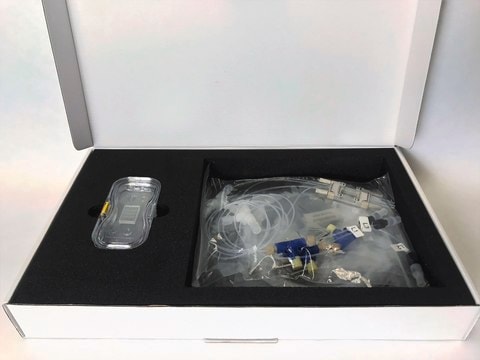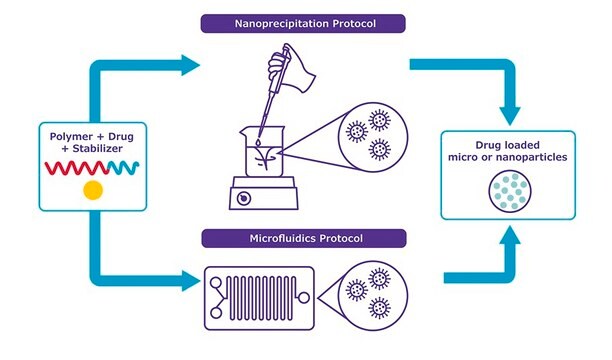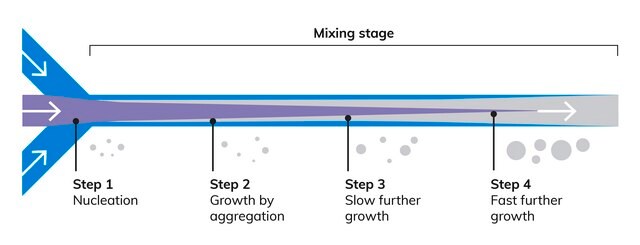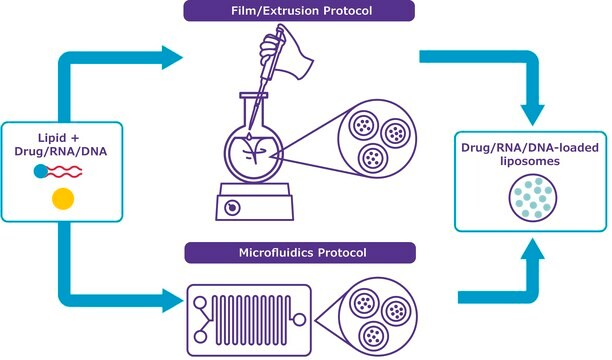915408
NanoFabTx™ PEGylated nanoparticle formulation screening kit
Sinónimos:
NanoFabTx™ reagent kit, Nanoparticle synthesis kit, PEGylated nanoformulations
About This Item
Productos recomendados
description
Kit components :
PEGPLGA-50L (912808-500mg)
PEGPLGA-75L (913049-500mg)
PEGPLA-L (913308-500mg)
PEGPCL-H (912549-500mg)
Stabilizer - P (913448-10g)
Materials screening kit, for synthesis of PEGylated polymeric nanoparticles
Quality Level
application(s)
advanced drug delivery
storage temp.
2-8°C
General description
Application
Features and Benefits
- Provides step-by-step protocols, both for standard extrusion or microfluidic-based synthesis, developed and tested by our formulation scientists
- Microfluidic formulation development for enhancing drug bioavailability
- Flexible synthesis tool to create uniform and reproducible nanoparticles
- Optimized to make nanoparticles from 60-100 nm
- Includes 4 different PEGylated polymers to identify the optimal material
Legal Information
Related product
Storage Class
12 - Non Combustible Liquids
Elija entre una de las versiones más recientes:
Certificados de análisis (COA)
Lo sentimos, en este momento no disponemos de COAs para este producto en línea.
Si necesita más asistencia, póngase en contacto con Atención al cliente
¿Ya tiene este producto?
Encuentre la documentación para los productos que ha comprado recientemente en la Biblioteca de documentos.
Nuestro equipo de científicos tiene experiencia en todas las áreas de investigación: Ciencias de la vida, Ciencia de los materiales, Síntesis química, Cromatografía, Analítica y muchas otras.
Póngase en contacto con el Servicio técnico




